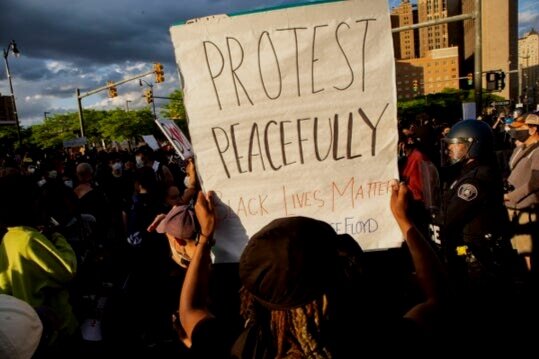Hearing the Message Amidst the Noise
I have resisted weighing into the discussion about the unfolding unrest rocking America’s cities because at times like this, there are surely others with real lived experience that should be given the floor. Yet, having spent years studying both identity-based conflict and group dynamics, it seems apropos that I offer comment – and to do so as succinctly as possible.
In any large conflict movement or uprising, there is often a catalyst, trigger, or observable injustice that spurs previously quieted people into action. Often, this single event acts to galvanize support around a powerful social cause. In America today, the trigger event was the horrific and senseless death of George Floyd and the powder keg it ignited was an acknowledgment of the systemic racism that still tears at the fabric of American society.
During growing unrest, it is also important to understand that those in the streets are not always uniform in their motivations or means. Even though we hear the media describe them as “the protesters”, there are surely many different subgroups. Our job, as conscientious citizens, is to make sure we hear and understand the message of the peaceful protestors, while ensuring that violence does not upend this freedom.
At the core of the protest movement are those who feel obligated – and rightfully so – to march peacefully and make their voices heard. We need to listen! Not only are they right in speaking out, but their actions are a core part of our democratic ideals because they bring accountability to elected officials and their policies.
As with conflict movements in general, subgroups can emerge – some motivated by less than noble ideals. Some joiners have little intent to uphold the original message or narrative that is inspiring the protest and are merely there to take advantage of the large public gathering to loot and steal. And, further elements may even use the protests as cover for expressing entirely separate convictions while carrying out violence against police, property, or other civilians. It is critical to recognize the distinction between peaceful protesters – for whom we need to hear – and violent opportunists. Continued reference to “the protesters” as one uniform group, makes the task of understanding the situation, all the more difficult.
Finally, there is a whole body of research on what happens within groups with respect to behavioral contagion. In conflicts I’ve researched, the type of intervention carried out is very important in the sense that it can either quell violence – or act as an accelerant for increased commitment to violence by those who were not originally prone to it. Furthermore, the psychology of groups suggests that the individual anonymity afforded by the large group may offer sufficient cover for carrying out behavior that one would never normally do on their own. In dynamic group settings, the more people that carry out a negative act, the more likely that act is to be acceptable to others.
It is therefore a delicate balancing act between maintaining civil liberties and protecting people and property. Increased law enforcement presence can, and should, do the latter while preserving the former. Those who march because of racism and injustice need to be heard and given the space to do so. Limiting violence and destruction of property will actually enable their voices to be heard because we can focus on their message. Understanding how groups evolve and whose voice we need to protect, will make all the difference in turning America’s protest into meaningful change.
